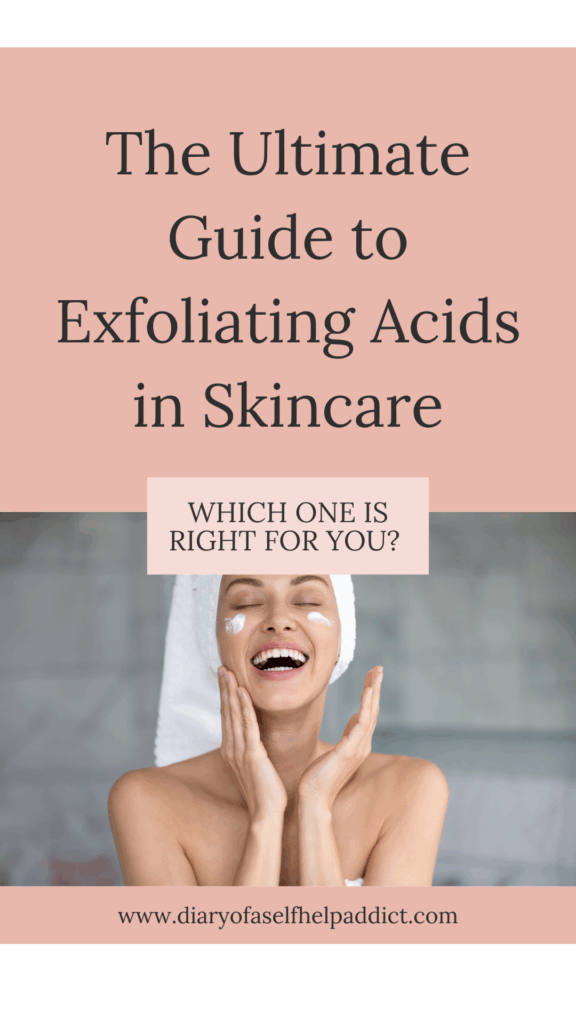
Chemical exfoliation is one of the most transformative steps to add to your skincare routine. Unlike physical scrubs that can be too harsh and cause microtears in the skin, exfoliating acids dissolve the bonds between dead skin cells, revealing smoother, brighter, healthier-looking skin beneath.
Unsurprisingly, I’ve fallen in love with skincare since turning 50 and becoming a cosmetic nurse injector. Over the past year, I’ve dialed in my routine—not just for my clients but also for myself. One of the most significant shifts I’ve made? Upping my exfoliation game. I used to exfoliate maybe once every week or two, thinking that was enough. But after experimenting and paying close attention to how my skin responds, I’ve found that exfoliating 3 to 5 times a week has been a total game changer for the look and feel of my skin. It’s smoother and more radiant, and my other products absorb much better.
In this post, I’m sharing a complete breakdown of the most popular exfoliating acids—how they work, who they’re best for, and how to use them without damaging your skin. I’ve also included links to some of my holy grail favorites and newer products I’m currently testing and loving. Whether you want to fade dark spots, smooth fine lines, unclog pores, or just achieve that fresh-glow finish, there’s an acid for you.
Why Should We Chemically Exfoliate?
Chemical exfoliation removes dead skin cells from the surface of your skin or within your pores using ingredients like AHAs, BHAs, and PHAs. It helps:
- Improve skin texture and tone
- Unclog and minimize the appearance of pores
- Fade hyperpigmentation and dark spots
- Reduce the appearance of fine lines
- Boost the effectiveness of serums and moisturizers
Unlike physical exfoliation, chemical exfolianting acids are often gentler and more consistent in their results.
DISCLAIMER: THIS IS NOT MEDICAL ADVICE. IT IS FOR INFORMATIONAL PURPOSES ONLY. FOR THE FULL PRIVACY POLICY, CLICK HERE
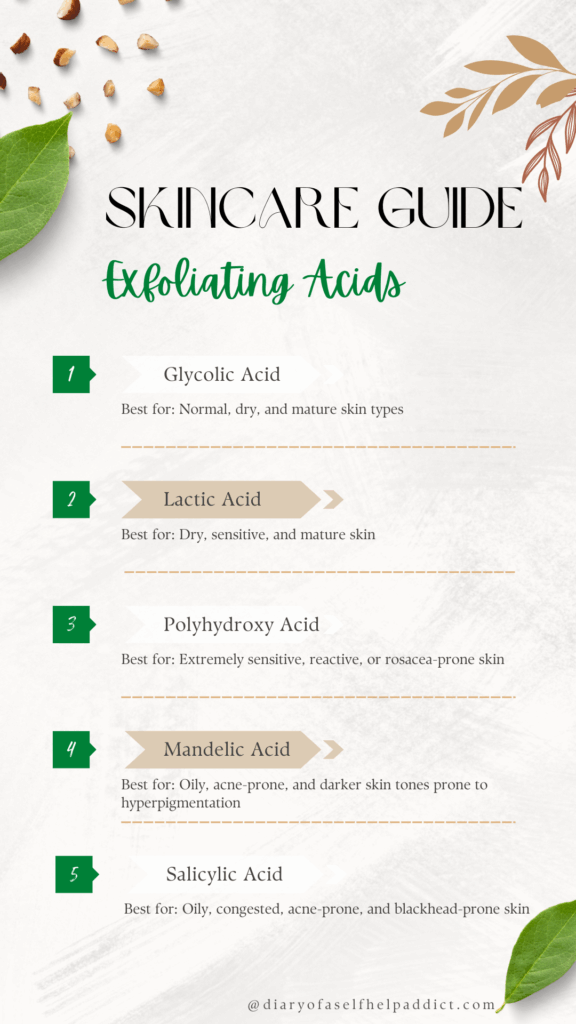
Which Acid Should You Choose?
The right exfoliant depends on your skin type, concerns, and sensitivities. Here’s a breakdown of the most popular exfoliating acids:
1. Glycolic Acid (AHA)
Best for: Normal, dry, and mature skin types.
Benefits:
- Derived from sugar cane, glycolic acid has the smallest molecular size of all AHAs, allowing it to penetrate deeply
- One of the most common and most potent acids
- Promotes cell turnover
- Smooths fine lines and texture
- Brightens dull skin
- Fades dark spots and post-acne marks
Contraindications:
- Not recommended for very sensitive or compromised skin (e.g., rosacea, eczema).
- It can cause stinging or irritation if overused.
Directions for Use:
Start with a low concentration (5–7%) 1–2 times per week and increase frequency as tolerated. Always use sunscreen during the day, as AHAs increase sun sensitivity.
Recommended Products:
- Minimalist Glycolic Acid Toner
- The Ordinary Glycolic Acid 7% Toner Tried and true brand that I’ve used for years… even before I fell in love with skincare.
- Prequel Multi-Acid Glycolic Toner I am excited to try this newer brand next! Developed by dermatologist, Dr. Samantha Ellis who I’ve followed on YouTube for years.
2. Lactic Acid (AHA)
Best for: Dry, sensitive, and mature skin
Benefits:
- Larger molecule than glycolic, so it exfoliates more gently
- Hydrates while exfoliating
- Improves skin tone and texture
- Ideal for those new to chemical exfoliants
Contraindications:
- Rarely causes irritation but should still be introduced slowly
- Not ideal for oily, acne-prone skin unless combined with other acids
Directions for Use:
Use 5–10% lactic acid 1–3 times per week at night. On off-nights, it’s great to alternate with retinol or peptides.
Recommended Products:
- Biologique Recherche P50 1970 This has recently been discontinued, so it may be difficult to find. Here are some other options that work just as well.
- The Ordinary Lactic Acid Toner
- Eadem Multi-Acid Toner with L.A. My new FAV! Gentle and effective with Lactic, Azelaic and Tranexamic Acids.
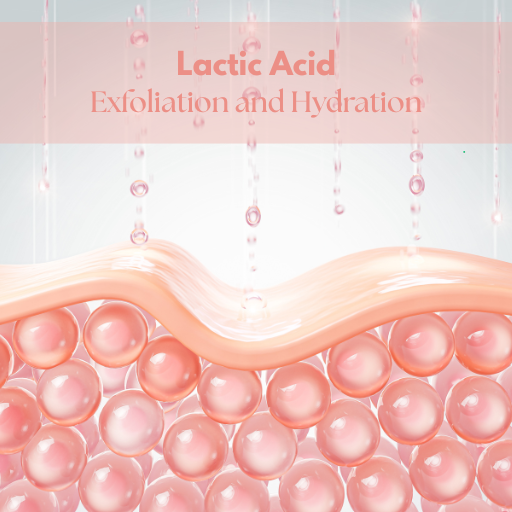
3. Polyhydroxy Acids (PHAs)
Best for: Extremely sensitive, reactive, or rosacea-prone skin
Benefits:
- Very large molecules, making them gentle and slow to penetrate
- Exfoliates surface-level dead skin cells
- Hydrates and strengthens the skin barrier
- Contains antioxidant properties
Contraindications:
- Generally safe for all skin types, including those with compromised barriers
Directions for Use:
Use daily or every other day. Excellent for layering under serums and moisturizers.
Recommended Products:
- Medik8 Press & Glow PHA Tonic
- The Inkey List PHA Toner I have not tried this brand yet, however it gets rave reviews.
- BioDance PHA Toner This is another PHA toner that I have yet to try, however it’s reviews are great and I love their face masks.
4. Mandelic Acid (AHA)
Best for: Oily, acne-prone, and darker skin tones prone to hyperpigmentation
Benefits:
- Derived from bitter almonds
- Has antibacterial properties
- Gently exfoliates while targeting acne and pigmentation
- Safe for sensitive skin and Fitzpatrick types IV-VI
- Helps regulate sebum production
Contraindications:
- Rare, but almond allergies may cause irritation
- It may not be strong enough for very resistant or thick skin types
Directions for Use:
Start 2–3x per week and increase to daily if the skin tolerates it. It works well with other exfoliants, like lactic acid.
Recommended Products:
- Paula’s Choice 6% Mandelic + 2% Lactic Acid I love the Paula’s Choice brand and this is one of the first acids I tried- it’s gentle, yet effective.
- The Ordinary Mandelic Acid
5. Salicylic Acid (BHA)
Best for: Oily, congested, acne-prone, and blackhead-prone skin
Benefits:
- Oil-soluble acid that penetrates deep into pores
- Dissolves sebum and dead skin cells
- Anti-inflammatory and antibacterial properties
- Helps prevent and treat active breakouts
- Minimizes the appearance of pores
Contraindications:
- Avoid if pregnant or allergic to aspirin (salicylates)
- It can be drying or irritating if overused
Directions for Use:
Use 1–2% concentrations once daily or every other day. They are great as a toner or spot treatment. Always moisturize afterward.
Recommended Products: Thankfully, as an adult, I do not struggle with acne-prone skin, so I have not personally tried these two products, but they come highly recommended. Some of the products that I use have a low percentage of salicylic acid, which is more tolerable for my very dry skin.
How to Layer Exfoliating Acids (Safely!)
- Start Slowly – 1–3 times a week at night. Over-exfoliation leads to irritation, dryness, and a damaged skin barrier.
- Only One Exfoliant at a Time – Don’t mix glycolic and salicylic acid unless the product is formulated with both.
- Avoid mixing with retinoids, vitamin C, or benzoyl peroxide. Use alternate nights or mornings to avoid irritation.
- Follow with Soothing and Hydrating Products – Think niacinamide, hyaluronic acid, or ceramide-rich moisturizers.
- SPF Is a Must – All exfoliating acids (except PHA’s) make your skin more sensitive to sun damage. Never skip sunscreen.
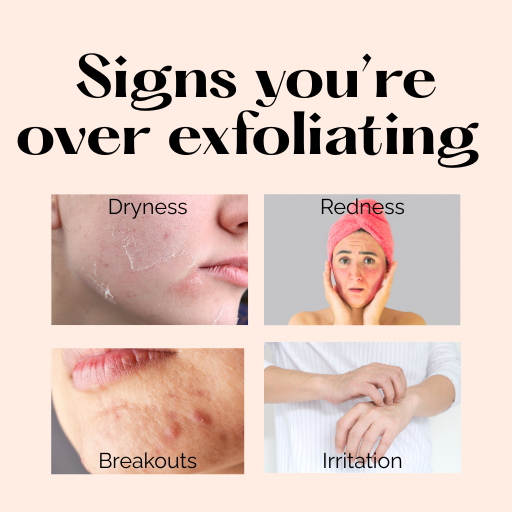
Signs You’re Over-Exfoliating:
- Tightness, dryness, peeling
- Redness or stinging
- More breakouts or irritation
- Increased sensitivity to other products
If any of these occur, stop using acids for a week or two and rebuild your skin barrier with gentle cleansers, moisturizers, and hydrating serums before slowly reintroducing them.
Chemical Exfoliation for Different Skin Goals:
| Skin Concern | Recommended Acid | Frequency |
|---|---|---|
| Dull Skin | Glycolic or Lactic | 2–3x/week |
| Dry/Dehydrated | Lactic or PHA | 1–3x/week |
| Sensitive Skin | PHA or Mandelic | 2x/week |
| Acne-Prone | Salicylic or Mandelic | Daily or every other day |
| Hyperpigmentation | Mandelic or Glycolic | 3x/week |
| Anti-aging | Glycolic + Lactic | 2–4x/week (alternate) |
Kelly’s Thoughts
Chemical exfoliation is a skincare game-changer when used correctly. The key is choosing the right acid for your skin type and concerns, starting slowly, and always supporting your skin with hydration and sun protection. Whether you go with glycolic to brighten, salicylic to unclog, or polyhydroxy acids to gently smooth sensitive skin, consistency will deliver results.
Let me know in the comments below if you’ve used any of these exfoliating acids. Or share the other products you love to keep in your skincare arsenal!
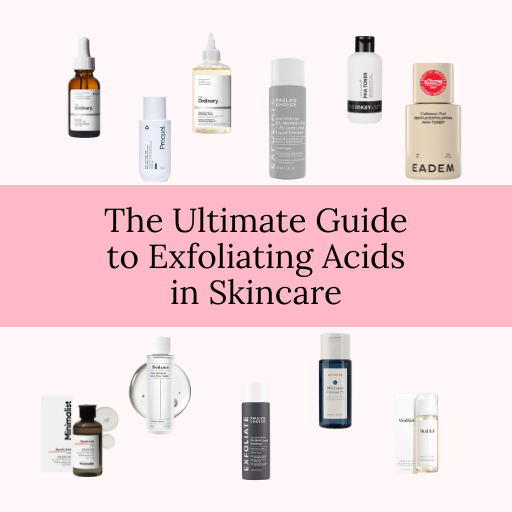
Shop the Recommended Products
- Minimalist Glycolic Acid Toner
- The Ordinary Glycolic Acid Toner
- Prequel Multi-Acid Glycolic Toner
- Biologique P50 1970
- The Ordinary Lactic Acid Toner
- Eadem Multi-Acid Toner with L.A.
- Medik8 Press & Glow PHA Tonic
- The Inkey List PHA Toner
- BioDance PHA Toner
- Paula’s Choice Mandelic + Lactic Acid
- The Ordinary Mandelic Acid
- Paula’s Choice Salicylic Acid Toner
- Naturium BHA Exfoliant
AS AN AMAZON ASSOCIATE, I EARN A SMALL COMMISSION FROM QUALIFYING PURCHASES AT NO EXTRA COSE TO YOU. READ MY DISCLOSURE HERE. THANK YOU FOR SUPPORTING MY SMALL BUSINESS!
Pin it for later
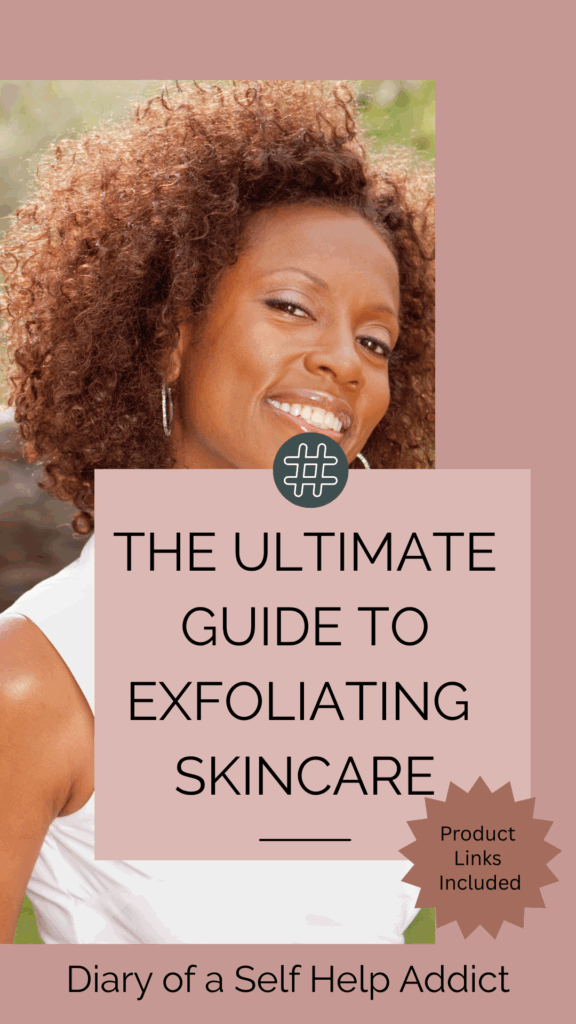

Leave a Reply